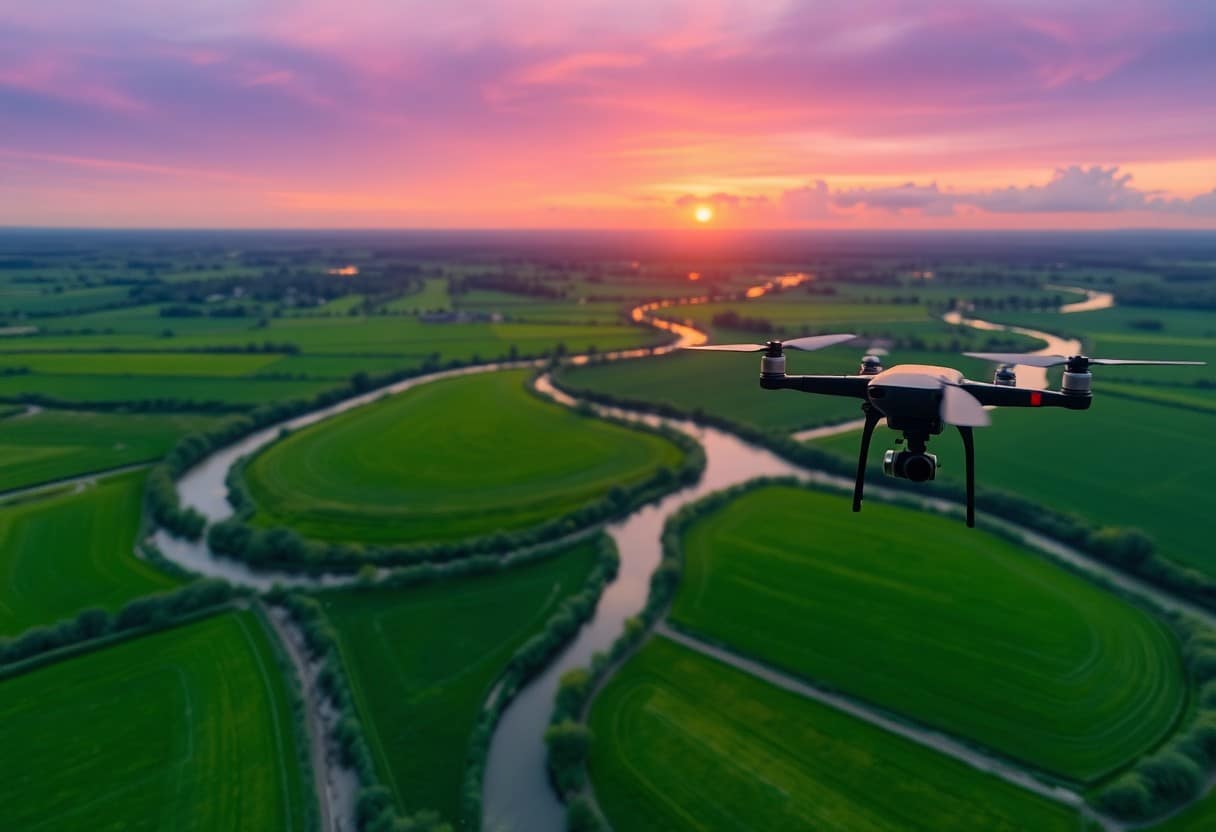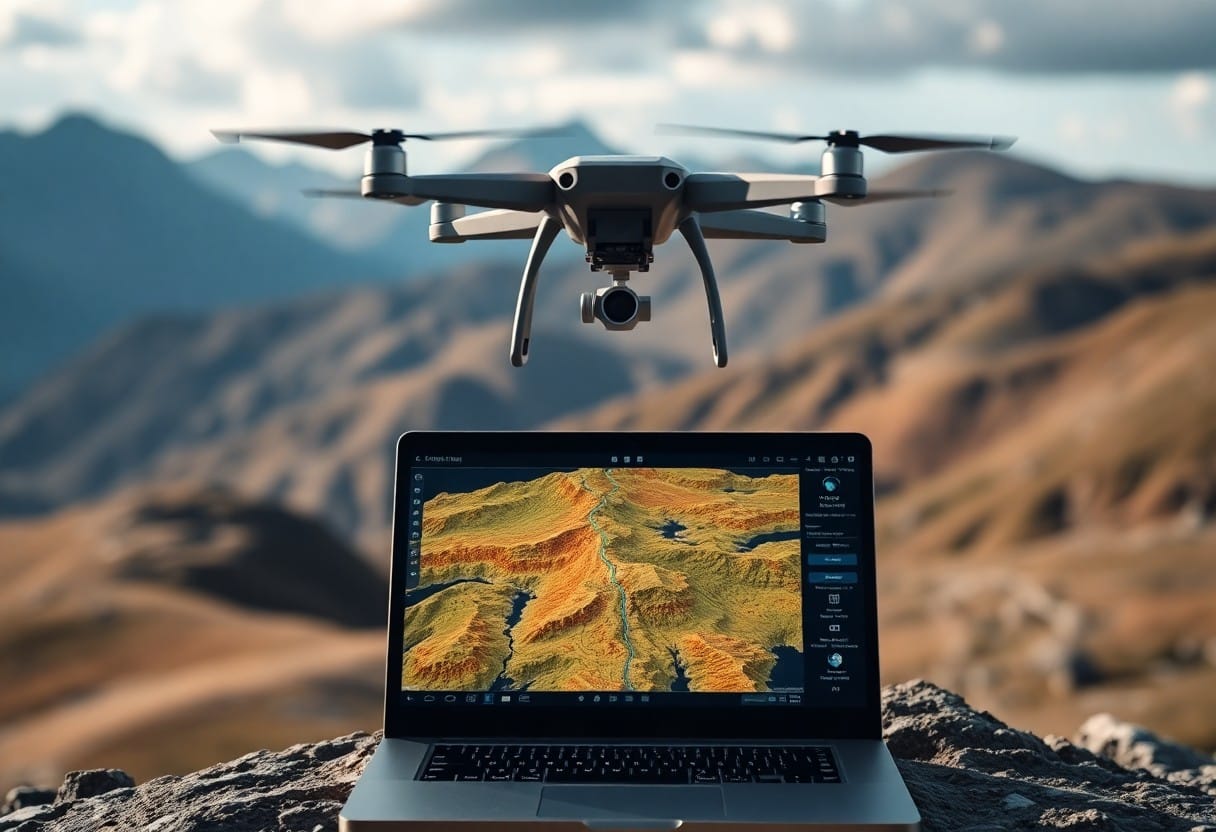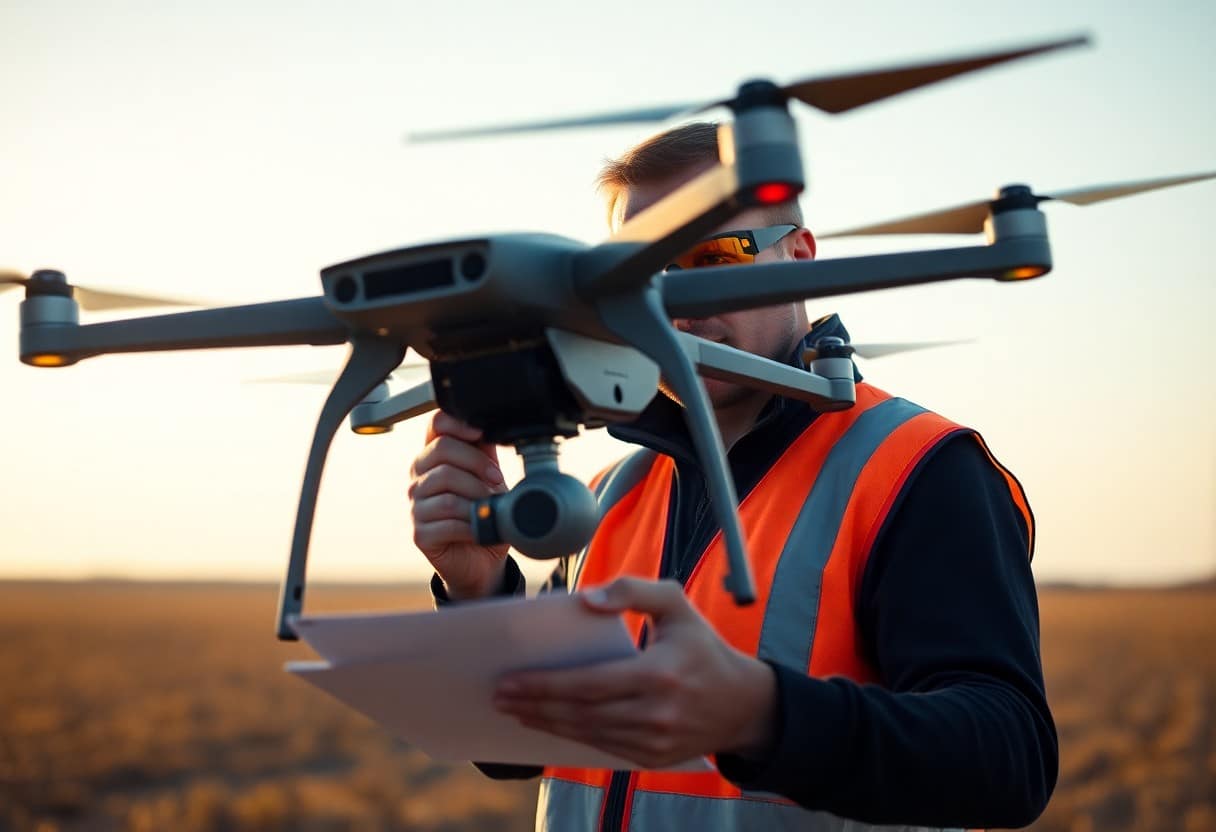A Step-by-Step Guide to Enchanting Aerial Photography
In this article you will learn how to capture theIt's amazing.We will guide you through the process of taking aerial photographs. Whether you are a beginner or an experienced photographer, we will guide you through thestep by step approachFrom planning to filming to post-production, we can help you to improveCreativity and TechnologyThe most important thing you can do is to take unique and attractive pictures. Remember, safety is always a priority and must be followed!Airspace rulesLet's get started on this journey of discovery and make sure your equipment is operating correctly!

Key Points:
- Choosing the right equipment: Ensure high quality drones and cameras to capture clear aerial images.
- Understanding Weather Conditions: Weather will affect the photo taking effect, choosing a sunny day is favorable for photo taking.
- Planning locations: Researching and choosing locations with spectacular views can add to the appeal of your photos.
- Pay attention to compositional techniques: Use foregrounds, middlegrounds, and backgrounds to enhance the depth and visual appeal of your photos.
- Experiment with different camera angles: Experiment with different heights and angles to find the best combination to showcase the subject.
- Editing: Use photo editing software to enhance colors and details to improve the quality of your final product.
- Respect for the law and privacy: Know your local laws before filming and respect the privacy and property rights of others.
Understanding Aerial Photography
Aerial photography is a technique that utilizes an overhead perspective to capture images that offer a unique view that you cannot get from the ground. By mastering the principles of photography, you can use a variety of equipment and techniques to create compelling images of nature or cityscapes. If you are eager to realize the potential of this field, understanding the basic concepts of aerial photography is your first step.
Types of Aerial Photography
There are many different types of aerial photography, each of which can present different visuals and messages. Understanding these types will help you choose the method that best suits your photography needs. Common types of aerial photography include:
- Helicopter Photography
- Drone Photography
- Hot Air Balloon Photography
- Fixed-Wing Aircraft Photography
- Satellite Photography
Assuming you are able to utilize these types, you will be able to produce stunning visuals.
Equipment and Technology Used
In aerial photography, properEquipmentrespond in singingTechnologyIt is important to ensure the quality of your images. Different equipment will affect your results, whether you choose aDrone,Digital CameraI'm a professional. CameraThe right photography techniques will help you capture those moving aerial images. Mastering the proper photography techniques will help you capture those moving aerial images.
When choosing equipment, you should consider your needs and goals. For drone photography, choosing a drone with a high-definition lens will ensure that you capture clearer images. If you need to capture a wider range of landscapes, it is important to choose a suitable flying equipment.safetyIt is also an element that should not be ignored, and you must follow local laws and regulations to avoidDangerousThe situation is happening. By piecing together these elements, your work will be able to draw attention to itself.
Factors affecting aerial photography
In aerial photography, many factors can affect the results you get, includingWeather conditions,Locationrespond in singingCompositionThese factors not only determine the quality of the photo, but also the overall aesthetics. These factors not only determine the quality of the photo, but also the overall aesthetics. You should consider these factors carefully to ensure that your aerial photography is captivating.Unlocking Drone Mapping - 7 Key Steps to Mastering Aerial 3D ReconstructionThis is an invaluable insight into the factors that influence the success of your aerial photography. The influence of these factors will be the key to the success of your aerial photography.
Weather conditions
Weather is crucial for aerial photography. Clearclear skycan provide optimal light and visibility, and thecloudy dayIt may affect the results of your photo shoot. When scheduling aerial photography, you need to pay attention to the forecast, the best time is usually in thesunrisemaybesundownTime Period.
Location and Composition
Choosing the location and composition is an important aspect of the success of your aerial photography. Choose a location withvisual appealLocations such as spectacular natural landscapes or urban architecture can significantly improve the quality of your work. Good compositional techniques, such as usingthe rule of thirdsmaybeGuide LinesThe color of the screen is a very attractive one, and it balances the screen and draws the viewer's attention to it.
When choosing your location and composition, considerlightdirectionality andArrangement of elementsIt is of paramount importance. Utilization(future) prospectsrespond in singingcontextsTo enhance the sense of layers, it can make your photos more three-dimensional. AttentionsafetyWhen photographing difficult locations, be sure to protect yourself by taking full account of the environment. With these tips, you'll be able to capture stunning aerial images with unique perspectives and subtle beauty.
A Step-by-Step Guide to Fascinating Aerial Photography
Aerial photography is an art that requires a perfect combination of planning and execution. Here are some key steps to help you master the art of captivating aerial photography and make your photos more appealing. For more tips, please seeHow to Enhance Aerial Photography Techniques for Captivating Shots?The
| Steps | descriptive |
|---|---|
| Planned Shooting | Choose the right place and time to make sure you have a clear view. |
| Capturing the perfect moment | Use the right equipment and techniques to get excellent image results. |
Planned Shooting
Before we start shooting.Planning is the key to successChoose the best location and time for your photo shoot. Choose the best place and time to shoot, taking into account the weather and light changes. Confirm the function of your equipment, including batteries and storage space, to avoid unexpected conditions during the shooting process.
Capturing the perfect moment
To get compelling aerial photography, theChoosing the right viewpoint and compositionIt's important to look for unique elements and make the most of natural light. Look for unique elements and make the most of natural light. You can explore many possibilities by adjusting the height, angle and focus to capture different scenes and emotions.
In capturing the perfect moment.Remember to stay stable.If you have a camera, use a stabilizer or tripod to minimize unnecessary shaking. Capturing the best moments takes patience and speed of reaction, and being ready to press the shutter ensures that you don't miss out on amazing scenes. And, as your skills improve, you'll be better able to capture those rare moments and produce more attractive work.

Tips for Enhancing Aerial Photography
To enhance yourAerial Photographytechniques, consider the following tips:
- Explore the differentShooting Angleto create a unique visual effect.
- UtilizationContrasting ColorTo enhance the attractiveness of the screen.
- Focus onCompositional Skillsto enhance the professional feel of the photo.
- Moderate useEditing ToolsTo make the work more impactful.
Any enhancement will help you become a better photographer, you may refer toHow to choose the right 3D modeling software for your project?The
Effective use of natural light
In aerial photography, the utilization ofnatural lightIt is possible to create fascinating images. The best time to shoot is atGolden HourWhen the sun rises or sets, the light is soft and colorful, adding depth and dimension to your work. Make sure you utilize the direction of the light to avoid overexposure and bring your photos to life.
Post-processing technology
Post-processing is important forAerial PhotographyThe finished product is of paramount importance. The use of professionalEditing SoftwareYou can adjust the color, contrast, sharpness, etc. to achieve the best results, using tools such as Adobe Lightroom or Photoshop. You can also usefiltersand presets to enhance the visual quality of your images and make your work more appealing.
In post-processing, the key is toBalance and ContrastTo ensure the naturalness and authenticity of the colors in your photos. Be careful not to over-edit the picture so that the quality is not affected. Choose editing parameters carefully, emphasizingHighlights and Shadowscontrast, maintaining the integrity of the image, so that your aerial photographs show thepull people inThe style.

Advantages and Disadvantages of Aerial Photography
Strengths and Weaknesses Overview
| Advantages | Disadvantages |
|---|---|
| Unique viewpoints for spectacular views | High cost of equipment and technology |
| Capable of capturing a wide range of scenes | Weather Conditions Affecting Photography |
| Enhance the artistic and commercial value of your photos | Difficult to maneuver, requires professional skills |
| Suitable for marketing and promotional materials | Complex legal and licensing requirements |
| Increase customer interest and engagement | Need high quality equipment |
Benefits of Aerial Photography
Aerial photography provides you with a unique perspective that allows you to capture spectacular scenes that would not be possible with traditional perspectives. This not only enhances the artistry of your work, but also increases its appeal in marketing, making your photos stand out and capture the attention of the viewer.
Challenges and Limitations
Although aerial photography has many advantages, it also faces many challenges and limitations. For example.High equipment and technology requirementsThe cost of the program may go up; at the same time, you will need to considerEffects of Weather on ShootingThis could lead to a squeeze on the program. Moreover.Legal SpecificationsYou may also be required to obtain prior authorization, which can add a lot of preparation work.
Challenges you face when taking aerial photographs may include strong winds affecting flight stability, clouds blocking light, and other factors that may make it more difficult to take pictures. Also.Safety issues related to equipment operationIf the drone goes out of control, it is important to think carefully and take the necessary precautions. You must also ensure that you haveAppropriate LicenseIn order to conduct photography legally and avoid legal disputes, it is important to have a good understanding of what is involved in aerial photography and how it works. Therefore, thorough preparation and knowledge accumulation will be crucial to successful aerial photography. It is important that you weigh these challenges and develop a strategy to maximize the potential of aerial photography.
Step-by-step guide: fascinating aerial photography
Discover how to capture compelling aerial photography with this guide. From choosing the right equipment to mastering your shooting techniques, each step is key to enhancing your work. By understanding the importance of light, angles and composition, and practicing the techniques, you'll be able to create stunning images that showcase your deep understanding and love of aerial photography. Remember, continuous learning and experimentation is the best way to improve your photography skills.
Frequently Asked Questions
Q: What is attractive aerial photography?
A: Attractive Aerial Photography refers to the use of drones or other aerial photography techniques to produce visually striking and aesthetically pleasing photographs or videos from a high altitude. It emphasizes composition, lighting, and a unique perspective on the scene, making the image more attractive.
Q: What equipment do I need for aerial photography?
A: Aerial photography usually requires a drone, a camera, a stabilizer and possibly additional accessories (such as filters and spare batteries). When choosing equipment, you should consider the quality of the camera, flight stability and ease of operation.
Q: How do I plan my aerial photography session?
A: When planning a location, consider the uniqueness and beauty of the landscape, choose high ground or a place with a wide field of view, and take into account lighting conditions and weather. It is also important to scout the location in advance and confirm flight permits.
Q: How to choose the best time to shoot aerial photography?
A: The best time to shoot is usually during the golden hour, i.e. early morning or dusk, when the light is soft and the colors are rich. Also, avoid shooting in the middle of the sun to avoid overexposure or color distortion.
Q: How can I improve my aerial photography skills?
A: Ways to improve your aerial photography skills include practicing, reading about it, watching professional aerial photography, and attending photography workshops or online courses. In addition, learning editing techniques can also significantly improve the quality of your work.
Q: How do I edit my aerial photography photos?
A: You can use professional editing software such as Adobe Lightroom or Photoshop to edit your aerial photographs. You can adjust exposure, contrast, color tones and correct lens distortion to improve the overall performance of the image.
Q: Is there any legal regulation on aerial photography?
A: Yes, aerial photography is subject to the laws and regulations of each country. Before flying, it is important to be aware of your country's regulations for drone use, including flight altitude, no-fly zones, and necessary licensing or registration requirements.




